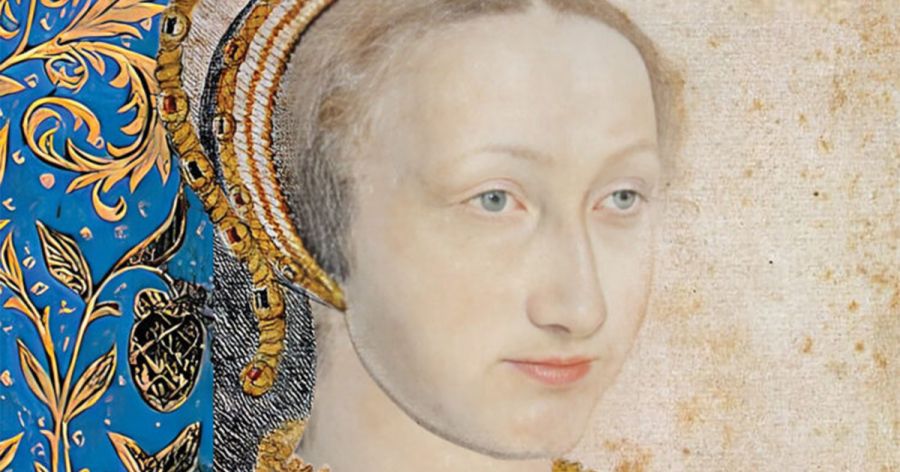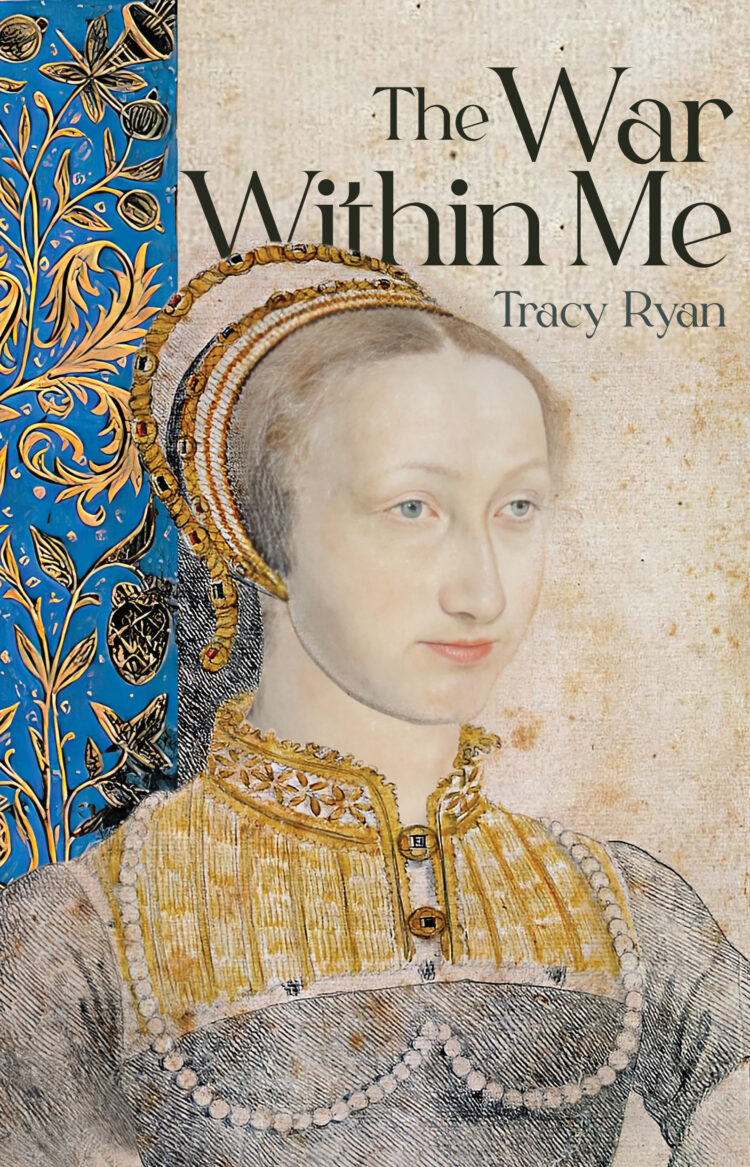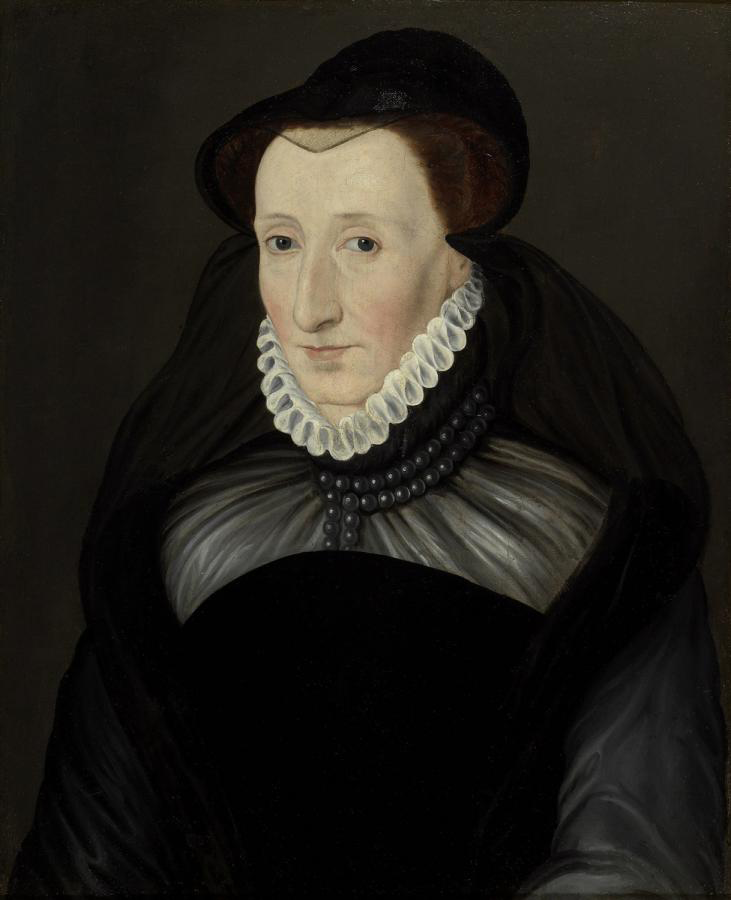
- Free Article: No
- Contents Category: Fiction
- Review Article: Yes
- Article Title: Fencing moves
- Article Subtitle: A leap across history
- Online Only: No
- Custom Highlight Text:
The War Within Me is the second book in Tracy Ryan’s trilogy on the Queens of Navarre, a kingdom precariously sandwiched between the powerful monarchies of France and Spain. In 1512 Navarre had lost much of its territory to Spain; its continued survival thereafter depended upon a complicated diplomatic dance with the French court. The first book in Ryan’s series followed the life of Marguerite of Angoulême, sister of François I of France, who married Henri II of Navarre in 1526. Now Ryan turns attention to their only daughter, Jeanne d’Albret, who succeeded to the throne after her father’s death in 1555.
- Book 1 Title: The War Within Me
- Book 1 Biblio: Transit Lounge, $34.99 pb, 358pp
- Book 1 Cover Small (400 x 600):

- Book 1 Cover (800 x 1200):

- Book 1 Readings Link: https://www.readings.com.au/product/9781923023390/the-war-within-me--tracy-ryan--2025--9781923023390#rac:jokjjzr6ly9m
Written as fiction but adhering closely to what is known of Jeanne’s life and times, The War Within Me offers a detailed account of a turbulent era and the constraints placed upon a woman, even a queen regnant, in sixteenth-century France. Jeanne is sometimes participant, sometimes pawn, sometimes helpless spectator in the political intrigues and bloody struggles of the royal court and a region roiled by war. At the age of twelve, she is compelled by her uncle, the French king, to marry the wealthy Duke of Cleves. The marriage is never consummated, and the two written protests Jeanne entered against it mean that it can be later annulled. At nineteen, she more willingly marries the charming but vacillating Antoine de Bourbon, Duke of Vendôme, who will eventually rule Navarre equally with her by right of marriage. That marriage is a mass of contradictions: sometimes affectionate and sensual, but riven by mistrust, jealousy, and incompatibility of thought.
While Jeanne’s attachment to Antoine waxes and wanes, her attachment to God grows steadily in strength and purpose. Profoundly influenced by her mother, who is drawn to the teachings of Calvin and a defender of religious freedom, Jeanne converts definitively to Protestantism soon after becoming queen. With power that her mother never had, she seeks to impose the ‘true Religion’ on her people in Navarre and her French territory of Béarn. As the French Wars of Religion heat up and the Huguenots are mercilessly attacked in France, Jeanne’s own attitudes and actions become correspondingly ruthless. Antoine is also drawn to the new religion, but his interests and loyalties are more firmly entangled with the French court, and he is less prepared than Jeanne to make a principled break with Catholicism. The central tension in the novel lies in this clash of loyalties and faith, at once personal and political.
 Portrait of Jeanne d'Albret by Antoine Caron (Bibliothèque de Genève via Wikimedia Commons)
Portrait of Jeanne d'Albret by Antoine Caron (Bibliothèque de Genève via Wikimedia Commons)
Impeccably researched, the novel is rich in instructive detail. There is much to tell, not only of Jeanne’s life but of its backdrop: distant campaigns and significant alliances, atrocities and bad faith, ambition and passionate conviction. Various stories are threaded through Jeanne’s, including the passion of Condé, Antoine’s younger brother, for the Protestant cause, and the lifelong efforts of Jeanne’s cousin, Françoise de Rohan, to have her son recognised as legitimate by his faithless father, the Duke of Nemours. Everywhere we see the influence of the unhappy but increasingly powerful Catherine de Médicis, wife of Henri II of France and mother of a succession of boy kings.
Ryan writes unobtrusively and well, if we set aside the occasional expression that seems jarringly out of place in this sixteenth-century setting: ‘he still won’t engage with me’, ‘she stays with the plan’, ‘I’m there for you’. But the pace of the novel is necessarily brisk, and the commitment to detail perhaps a little too earnest, the conscientious work of the chronicler leaving insufficient room for the joyful work and imaginative licence of the weaver of fiction. Jeanne is married and then unmarried, in love and then betrayed, drawn to Calvinist religion at one moment, and at the next imposing it on her kingdom with ruthless force. It is hard to keep pace with these shifts of sentiment and faith.
It does not help that Jeanne is not always present when discussions are held, or decisions made, that are vital to her life. Events outpace her narration, requiring hasty backfilling. The novel spans thirty years, taking Jeanne from passionate, self-willed child to disappointed and dying queen, but the tone of the first-person, present-tense narration barely alters: there is some natural bitterness, but little in the writing to suggest developing maturity of understanding or self-awareness; little to convey personal struggles of conscience or affection. Indeed, we learn of some major developments only when Jeanne mentions them in conversation, belying any assumption that the narrative point of view gives us privileged access to the inner woman. At moments where imaginative insight extending beyond the archive would be most telling and most dramatic, Ryan seems bound by the limits of her sources. While Jeanne hints that her private views may differ from those she publicly expresses, the ‘war within’ is rarely made visible; it can only be guessed at.
Historical fiction is a broad church, encompassing as many different styles as there are readers to appreciate them. Although (or perhaps because) I am a historian, my own taste leans more towards those where history provides only a backdrop for fictional characters whose lives and loves the author is free to invent. Fiction that cleaves close to history is at a disadvantage because, while bound by what is ‘known’, it tends to give little space to the disputed interpretations and glorious uncertainties that make history interesting. Many of the events related in this novel (whether a fencing move, an edict, or an amorous intrigue) are, inevitably, open to speculation and debate. Jeanne’s narrative, however, can only present the singular version of events that the author has settled on as best suited to her fictional account. There are important choices being made, certainly, in the artful weaving of story around the spare trail of documentation; there is an interpretive as well as an imaginative intellect at work. But the success of the novel lies in concealing, rather than drawing attention to, those choices.
In exchange, fiction promises something that historians can find elusive: an imaginative sympathy that leaps across historical distance to restore a sense of the presence of the past; the fully realised humanity of individuals who do not yet know how things will turn out. I admire Ryan’s novel, its careful construction, vivid detail, and pacy narration. But for me, it does not make that leap. Jeanne chronicles a life of love and loss, faith and faithlessness, power and pain, but her words seem tied to the page, lacking the indefinable magic that would transport us into her world.


Comments powered by CComment